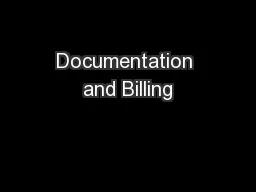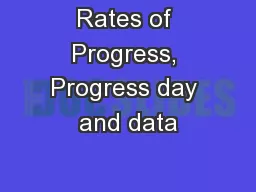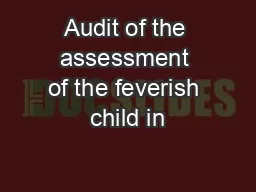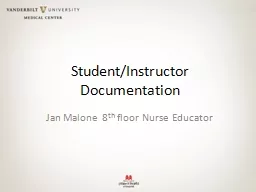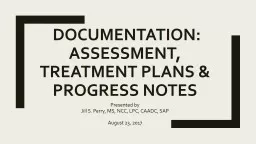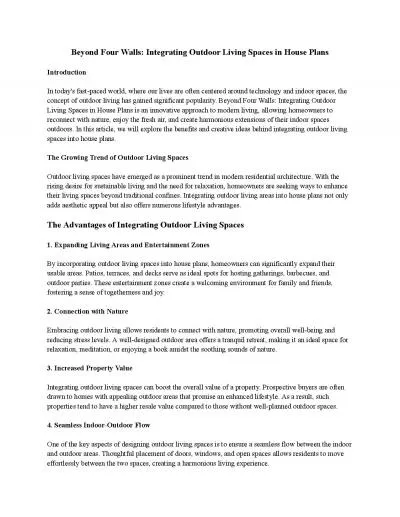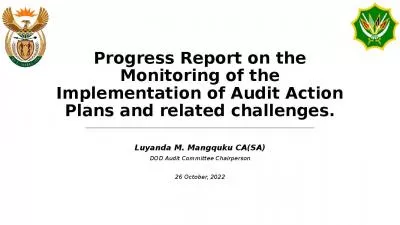PPT-Documentation: Assessment, Treatment Plans & Progress Notes
Author : olivia-moreira | Published Date : 2019-12-21
Documentation Assessment Treatment Plans amp Progress Notes Jill S Perry MS NCC LPC CAADC SAP April 5 2019 JP Counseling amp associates LLC 701 Sharon Road Suite
Presentation Embed Code
Download Presentation
Download Presentation The PPT/PDF document "Documentation: Assessment, Treatment Pla..." is the property of its rightful owner. Permission is granted to download and print the materials on this website for personal, non-commercial use only, and to display it on your personal computer provided you do not modify the materials and that you retain all copyright notices contained in the materials. By downloading content from our website, you accept the terms of this agreement.
Documentation: Assessment, Treatment Plans & Progress Notes: Transcript
Download Rules Of Document
"Documentation: Assessment, Treatment Plans & Progress Notes"The content belongs to its owner. You may download and print it for personal use, without modification, and keep all copyright notices. By downloading, you agree to these terms.
Related Documents


